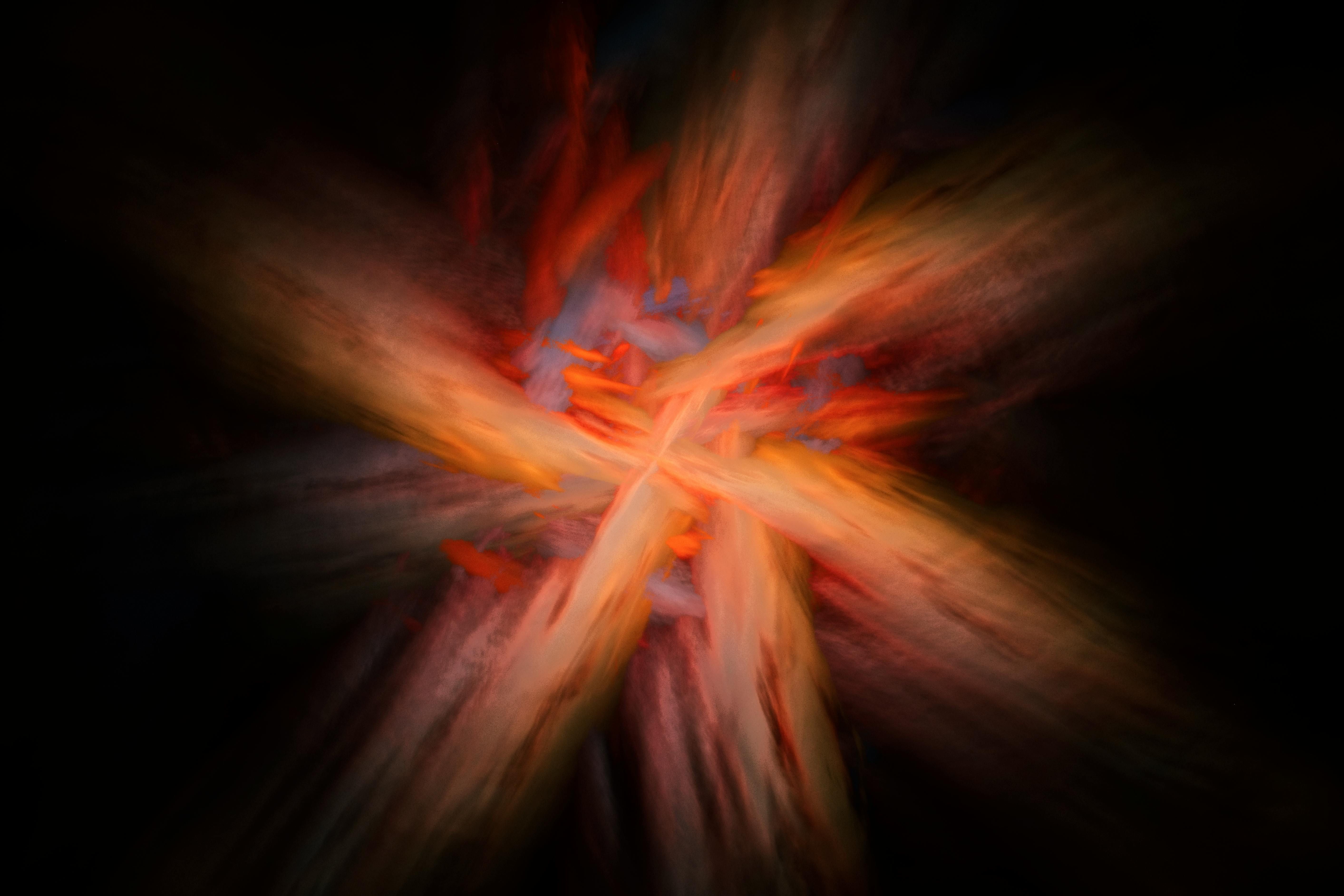Astronomers Identify Potential Matter-Antimatter Collision in Major Cosmic Blast
Unraveling the BOAT: A Look at the Brightest Gamma-Ray Burst in Decades
Something truly spectacular happened in the far reaches of our universe back in October 2022, and scientists are still buzzing about it. The event, affectionately known as the BOAT (Brightest Of All Time), was none other than a gamma-ray burst, and it's turning the astrophysics world upside down.
First spotted by the National Science Foundation's NOIRLab telescope Gemini South, the BOAT was a space explosion that left even the most advanced observatories stunned. Its official name is GRB 221009A, but the BOAT moniker seems fitting, as it is, without a doubt, the brightest ever recorded.
The team of researchers led by Maria Edvige Ravasio, a researcher at Radboud University in the Netherlands, uncovered something unique about this gamma-ray burst; an emission line that revealed itself about 280 seconds after the initial explosion.
"When I first saw that signal, it sent shivers down my spine," Ravasio said in a NASA release. "Our analysis since then shows it to be the first high-confidence emission line ever seen in 50 years of studying GRBs."
But what, exactly, is a gamma-ray burst?
Gamma-ray bursts happen when a distant star undergoes a brilliant death. In simplest terms, it's a colossal explosion that sends out waves of radiation, including gamma rays. Although many such bursts have been observed, the BOAT stands out due to its unparalleled brilliance and the wealth of information it offers about the star's collapse.
"While some previous studies have reported possible evidence for absorption and emission features in other GRBs, subsequent scrutiny revealed that all of these could just be statistical fluctuations," said co-author Om Sharan Salafia, a researcher at INAF-Brera Observatory. "What we see in the BOAT is different. We've determined that the odds this feature is just a noise fluctuation are less than one chance in half a billion."
Revealing the deepest depths of space
The first details about the BOAT emerged just a few months after its discovery. Researchers studied its X-ray and gamma-ray emissions, and their findings were groundbreaking. The star that bore the BOAT was found to be an impressive 20 times heavier than our sun, and the explosion lasted for hundreds of seconds.
But the researchers didn't stop there. Over the next few months, they continued to study the gamma-ray burst, searching for patterns, anomalies, and anything that would shed light on our understanding of the universe.
The discovery of a lifetime
One of the most exciting findings came last year when the team noticed an intriguing emission line near 10 million electronvolts. They traced it back to collisions between electrons and positrons – their antimatter counterparts.
The team believes that these collisions occurred within a jet, where matter was moving at nearly the speed of light. This unusual phenomenon created a unique "blueshift," pushing the emissions toward higher energies.
A glimpse into the unknown
The study of the BOAT has yielded invaluable insights into how the universe behaves during the most violent and energetic events. The discovery of the emission line adds a new twist, hinting at the presence of high-energy processes deep within the central engine of a gamma-ray burst.
The researchers are still piecing together the puzzle, but one thing is clear: GRB 221009A, the BOAT, has added a brand new chapter to astrophysics and taken us one step closer to understanding the mysteries of the universe.
[1][2][3]: Enrichment Data
- The brilliant gamma-ray burst, known as the BOAT, which occurred in October 2022, has sparked intense curiosity in the scientific community, as it was the brightest ever recorded.
- The team led by Maria Edvige Ravasio, a researcher at Radboud University in the Netherlands, has previously uncovered something unique about the BOAT: an emission line that emerged about 280 seconds after the initial explosion.
- The discovery of the emission line in the BOAT indicates the presence of high-energy processes deep within the central engine of a gamma-ray burst, providing valuable insights into the universe's behavior during violent and energetic events.
- The study of the BOAT has taken us one step closer to unraveling the mysteries of space and the future of science, as it adds a new chapter to the field of astrophysics.





